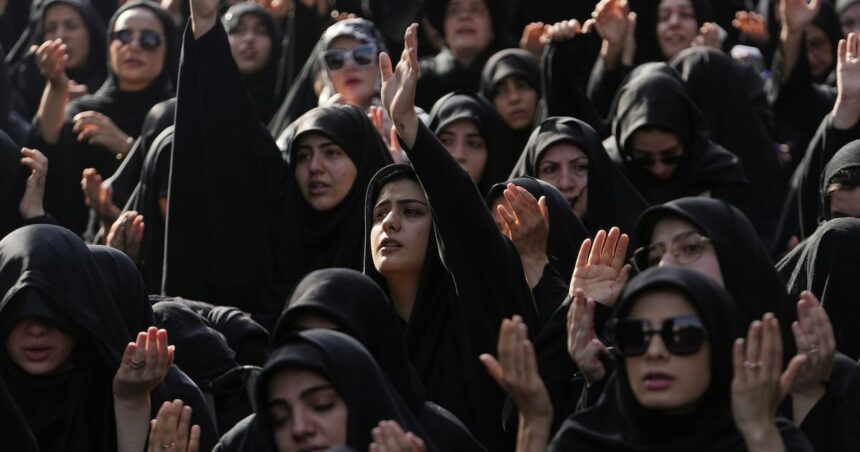I’ve spent the last 48 hours in Tehran, where the city pulses with tension unlike anything I’ve witnessed in my two decades covering this region. The appearance of Supreme Leader Ayatollah Ali Khamenei yesterday broke a conspicuous three-week silence that had fueled speculation across diplomatic circles from Brussels to Washington.
Standing before military commanders at the Imam Khomeini Hussainiyah prayer hall, Khamenei delivered a speech that analysts are already calling a pivotal moment in the escalating Iran-Israel conflict. “The Zionist entity has crossed boundaries that cannot be uncrossed,” he declared, his voice steady but resolute. “Our response will be measured not in days, but in consequences.”
The Supreme Leader’s first public appearance since hostilities erupted last month comes at a critical juncture. Iranian missiles have struck Israeli military installations while Israeli airstrikes have targeted nuclear facilities near Isfahan and Natanz. According to the UN Office for the Coordination of Humanitarian Affairs, these exchanges have resulted in over 340 casualties across both countries, with civilian infrastructure increasingly caught in the crossfire.
“What’s remarkable about Khamenei’s address is what he didn’t say,” notes Dr. Farzan Sabet, a researcher at the Geneva Graduate Institute who has tracked Iranian political rhetoric for over a decade. “There was no mention of potential ceasefire conditions, suggesting Tehran is prepared for prolonged engagement.”
The streets of Tehran tell their own story. Air raid sirens have become routine, and the government has established emergency shelters in metro stations. Mahsa Rajavi, a 34-year-old pharmacist I spoke with near Valiasr Square, expressed the ambivalence many Iranians feel. “We support defending our country, but we also fear where this war leads us,” she said, adjusting her headscarf as military vehicles passed. “My brother is in the Revolutionary Guard. We are proud but terrified.”
Western intelligence sources have confirmed to Mediawall.news that Iran has mobilized its proxy network across the region, with Hezbollah increasing rocket attacks from Lebanon and Houthi forces disrupting shipping lanes in the Red Sea. The Israeli Defense Forces reported intercepting twelve drones launched from Yemen just hours after Khamenei’s speech.
Economic indicators reveal the wider impact. The Iranian rial has depreciated 18% against the dollar since hostilities began, while oil prices have surged above $110 per barrel. The International Monetary Fund warns that extended conflict could trigger global energy supply disruptions, particularly affecting European markets still recovering from recent Russian supply constraints.
What distinguishes this conflict from previous Iran-Israel tensions is its direct nature. While both countries have engaged in shadow wars and proxy conflicts for decades, the current situation represents the first open warfare between them. “We’re witnessing the collapse of strategic ambiguity,” explained former EU Special Representative to the Middle East Peace Process Bernardino León in a phone interview. “Both sides have abandoned the pretense of plausible deniability.”
American involvement remains carefully calibrated. The U.S. has deployed two carrier strike groups to the eastern Mediterranean but has avoided direct military engagement. “We’re urging immediate de-escalation through all available diplomatic channels,” State Department spokesperson Jessica Chen told reporters yesterday, though sources within the department acknowledge that American leverage with either party is limited.
Regional reactions have revealed shifting alliances. Saudi Arabia has maintained studied neutrality, while Turkey has condemned Israeli strikes on Iranian civilian infrastructure. The United Arab Emirates has offered to host peace talks, a proposal that Israeli Prime Minister Benjamin Netanyahu immediately rejected as “premature.”
Walking through Tehran’s Grand Bazaar this morning, I found merchants discussing war developments rather than haggling over prices. “Business is down 60%,” explained carpet seller Hassan Moussavi, gesturing to his empty shop. “But everyone understands some things are more important than commerce now.”
The humanitarian dimension continues to worsen. Iranian state media reports over 10,000 displaced from border regions, while the Israeli Home Front Command has maintained evacuation orders for northern communities. International aid organizations face mounting obstacles delivering assistance, with the World Food Programme reporting that fuel shortages have hampered distribution efforts.
As night falls in Tehran, the city’s lights dim for blackout procedures. Military analysts believe Israel may be preparing another wave of strikes targeting Iran’s energy infrastructure. The Center for Strategic and International Studies estimates that Iran has already lost 40% of its refining capacity.
What comes next depends largely on whether either side can identify achievable victory conditions. “Neither country can sustain this level of conflict indefinitely,” observes Dina Esfandiary from the International Crisis Group. “But neither can accept terms that appear as capitulation.”
Khamenei’s appearance yesterday may have been brief, but its significance extends beyond the content of his speech. By emerging publicly, he signaled Iranian resilience while simultaneously calming domestic speculation about his health or authority. Whether this appearance presages escalation or eventual de-escalation remains the question consuming diplomatic cables across the region tonight.






